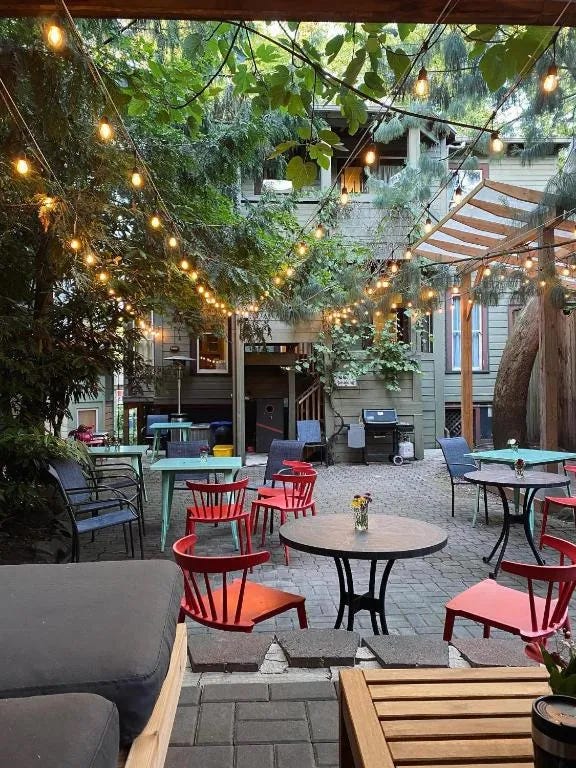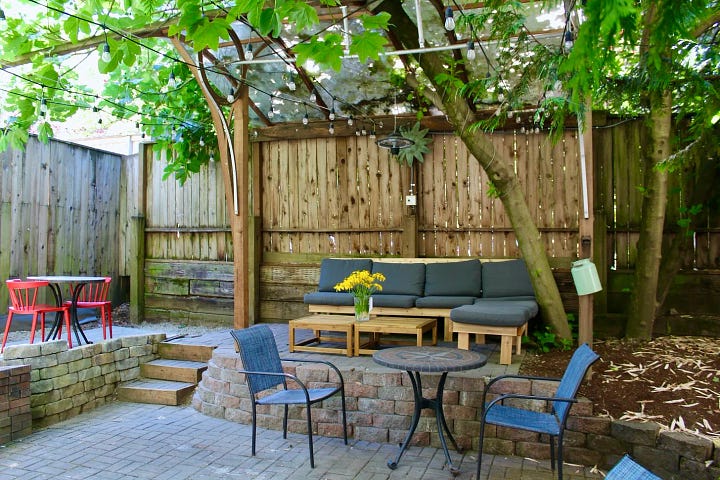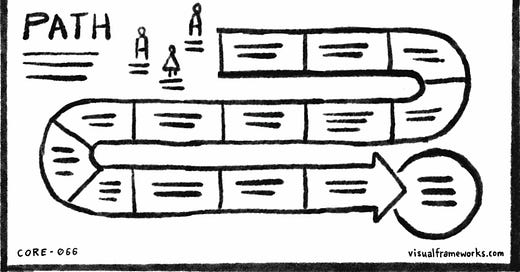The Monday memo is food for thought to fuel your week.
Hi everyone,
Do you have a nonlinear mind?
I’m one of those people who has a hard time thinking sequentially. When I think about anything, it always seems that everything is connected to everything else. Do you ever feel like that? If you do, that makes writing doubly difficult, because any piece of writing, from an email to a blog post to a book, is linear and sequential by nature. Taking that jumble of interconnected ideas and forcing them to march in line like soldiers feels incredibly limiting and reductive.
But that linearity has a purpose. Sequencing your ideas is a consideration and a service for your reader. It puts your ideas in order and gives people a pathway through the thicket of your thoughts.
One thing I have found helpful in any writing project is something called a beat sheet.
Screenwriters use beat sheets to map out the spine of a movie before they write all the scenes and dialogue. Each scene gets exactly one sentence, like a drum beat that moves the story forward one step. That’s it. A movie might have 16 to 32 beats. The magic of a beat sheet is that on just one or two pages, you can feel the rhythm and flow of the entire story. String all those beats together and you get a story with momentum and rhythm.
But here’s the thing: beat sheets aren’t just for movies. They’re a powerful tool for any creative project with a storyline: novels, presentations, how-to books, even personal essays. The beat sheet gives you a helicopter view of your whole project. You can see how all the pieces fit together, spot the gaps, and feel whether the story flows.
Exercise.
Here’s your exercise for the week: Find a story you're working on, or want to tell, and make a beat sheet. Keep it simple. One sentence per scene or chapter. Number them sequentially. Aim for 25 beats or less (50 at the absolute most). The shorter it is, the easier it will be to track and revise.
Don’t worry about making it perfect on the first try. The real power comes from iteration. You might go through 10 or 16 versions before you find a beat sheet that really works. That’s normal. That's part of the process.
When you're done, read through your numbered sentences from beginning to end. Do they create a logical flow? Does each beat lead naturally to the next? Can you feel the story’s momentum building? Does it come to a satisfying conclusion?
The beat sheet isn’t the final destination — it’s the foundation that everything else builds on. Get the beats right, and the rest becomes much easier to write.
What story have you been wanting to tell? Start with a beat sheet. See what happens.
Connecting in real life!
I’ve picked a date and location for our summer real-life Possibilitarian Potluck Pop-up. We’ll be meeting in Portland, Oregon, on Saturday, June 28, so mark your calendars! We’ll be hosting this at a local venue, and lodging for Friday and Saturday nights are available if you decide to join us from out of town.


It’s potluck, free to attend, just bring yourself and a creative idea or project you want to discuss. There’s no ticket price and no plan. We’ll figure it out when we get there.
Here’s your invite with all the information. If you plan to join us, don’t forget to RSVP here.
More information for members is below the fold.👇




